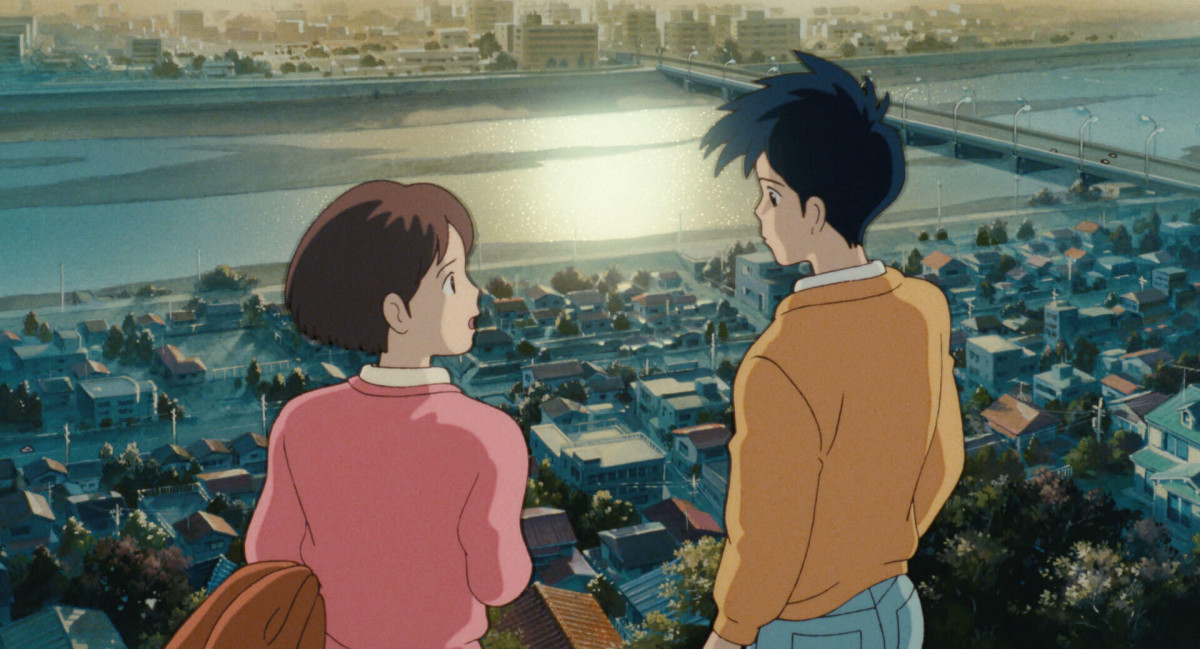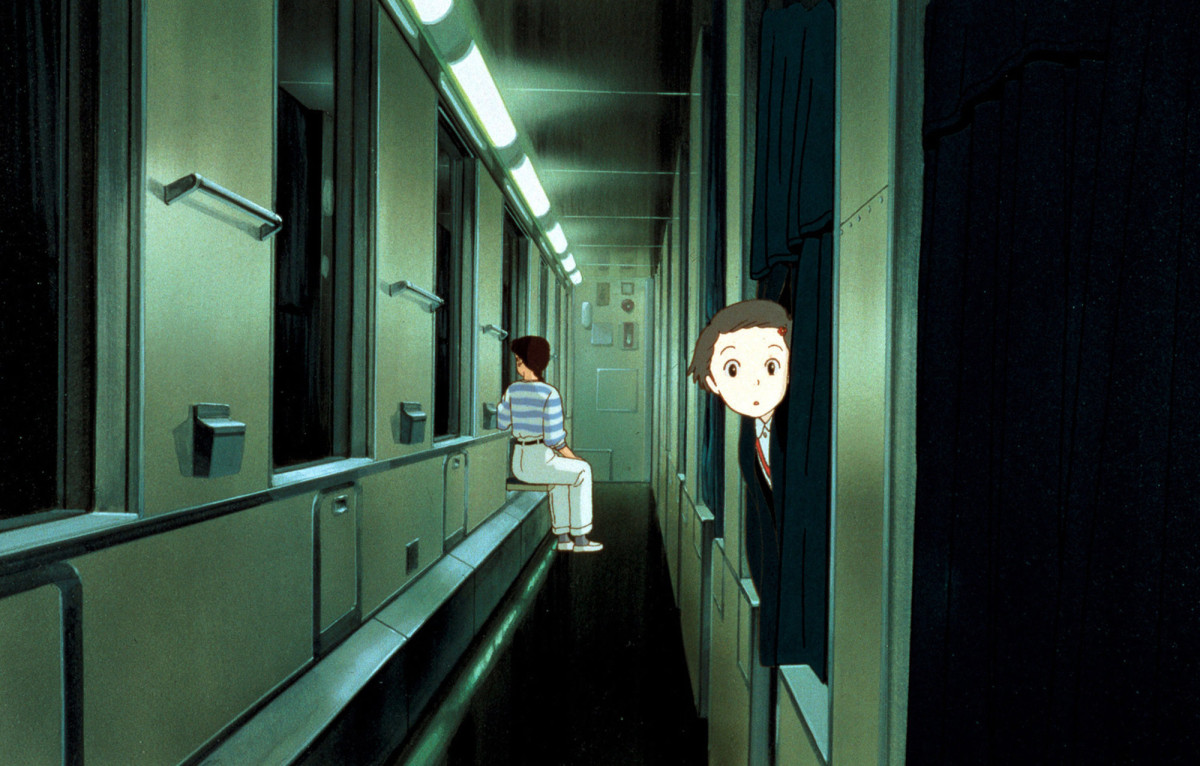From Metropolis (1927) to Taxi Driver (1976) and Salaam Bombay! (1988) to Gully Boy (2019), cities on screen have long fascinated us – mirroring, distorting and reimagining urban life. Scholars such as Raymond Williams and David B. Clarke have shown how literature and film shape our understanding of cities, often revealing the tension between community and alienation, modernity and nostalgia. Thinkers like Marcus Doel and Henri Lefebvre remind us that cities are not just concrete and commerce. They are lived, felt and socially constructed.>
Few cities have inspired this dual gaze in films more than Tokyo. In Studio Ghibli’s Whisper of the Heart (1995) and Only Yesterday (1991), Tokyo becomes a character in its own right; it can be both grounding and disorienting, echoing George Simmel’s vision of the urban space as a site of both creativity and quiet estrangement.>
Studio Ghibli, founded in 1985 by Hayao Miyazaki, Isao Takahata and Toshio Suzuki, has become synonymous with animation excellence. Their movies have critiqued Japan’s rapid urban growth, showcasing the delicate harmony between human development and nature’s grandure. In an era of AI-generated imitation, the Studio’s artistry, once quietly revered, now stands at the centre of a broader conversation about what makes art truly human. >
Yoshifumi Kondō’s Whisper of the Heart presents Tokyo as a place of inspiration and dreams. It follows 14-year-old Shizuku as she wanders through the bustling city with a sense of wonder, finding creative inspiration in its vibrant neighbourhoods and the people she meets. Her journey through Tokyo’s suburban landscapes, antique shops and libraries highlights the city’s potential to nurture creativity and personal growth.>

A still from ‘Whisper of the Heart’.>
The film uses a warm and bright colour palette for the city – yellows, oranges, reds and greens – that reflects the characters’ mood and emotions, along with the seasons and time of day. The detailed animation brings Tokyo’s streets and homes to life. The film’s music, including its use of ‘Country Roads’, is upbeat and melodic, reflecting Shizuku’s youthful enthusiasm and the lively city atmosphere. The animation is detailed and realistic, with smooth movements, expressive faces and intricate backgrounds. Background characters are never still; they actively engage with their surroundings, making the city a living, breathing part of the story. The style is influenced by manga and the works of Miyazaki, who wrote the screenplay and oversaw the film’s production. Around 70% of the film follows Shizuku’s everyday life and adventures in Tokyo, allowing the city itself to take centre stage.>
In contrast, Isao Takahata’s Only Yesterday takes a more introspective approach and explores themes of alienation and nostalgia. The film follows Taeko, a 27-year-old office worker, who reflects on her childhood in Tokyo and her current life, feeling disconnected from the city’s relentless pace and modernity. The film juxtaposes her desire for a simpler, more rural life with her present-day experiences in Tokyo, highlighting the emotional and psychological distance she feels. The film’s animation and realistic portrayal of Tokyo’s urban environment bring out her sense of disconnection and longing for a simpler life.>
The film employs a cold, dark colour palette with shades of blue, grey, black and white to reflect the monotony and gloom of the city, as well as the nostalgia and regret of the protagonist. Taeko’s daily commute and office scenes illustrate the repetitive rhythm and routine of adult life in Tokyo. The use of muted and earthy tones for the city captures Taeko’s introspective and occasionally melancholic state of mind. The soundtrack is soft and reflective, enhancing the film’s contemplative atmosphere and tracing Taeko’s emotional journey.>

A still from ‘Only Yesterday’.>
The animation style is simple and stylised, characterised by minimal, sometimes rough movements, understated facial expressions, and sketch-like backgrounds. This approach is influenced by the watercolour paintings of the original manga, as well as the works of Takahata, who directed and wrote the film. Unlike Whisper of the Heart, the city occupies a small portion of the film, about 15%, as the story alternates between Taeko’s life in Tokyo and in Yamagata, the rural neighbourhood she moves to.>
The dual representation of Tokyo in these films serves not only as a narrative choice but also as a reflection of the city’s complex identity. Like many global cities, Tokyo is a place of contrasts where tradition meets modernity and where dreams can be both realised and shattered. This duality is a common theme in urban studies, which regard cities as sites of both opportunity and alienation. Furthermore, the difference in the protagonists’ ages influences their interactions with and perceptions of the city. While Shizuku’s youthful perspective adds a sense of excitement and discovery to her experiences in Tokyo, Taeko’s adult viewpoint is more reflective and critical.>
By examining these two films, we can gain insights into how Tokyo’s multifaceted nature is portrayed through different lenses. Whisper of the Heart and Only Yesterday show us that cities are not monolithic; they are experienced differently by each individual. They are shaped by who we are, what we remember, and what we hope to become. These films help us think more deeply about what it means to live in a city, touching on themes of identity, belonging and the pace of urban change.>
Together, the two films offer two distinct yet complementary views of Tokyo: one full of possibility, the other tinged with longing. Through their contrasting tones and visual styles, they capture how the same city can feel radically different depending on who is looking and when. It is this quiet attention to emotional texture that makes Studio Ghibli’s vision of urban life so resonant and so deeply human.>
Priya Singh is a researcher at the Indian Institute for Human Settlements, Bengaluru, working on higher education access, qualitative research ethics and cultural representation through both fieldwork and film.>


AloJapan.com